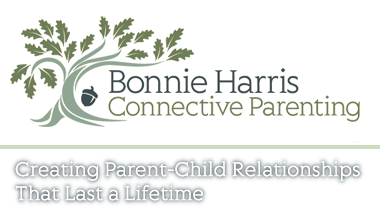The beliefs we each hold can sustain us, move us forward, and hold us. They can also sabotage our desires and drive our lives in a direction we either don’t want to go or, more likely, are too afraid to change. But the good news is we can tackle those beliefs and change them—or at least change the way we experience them.

For instance, I have always (or since high school anyway) believed that I was not very smart. That belief limited my thinking about what was possible for me in my life. Then I realized my belief got planted after a high school history teacher told me I couldn’t see the forest for the trees. I didn’t even know what that meant at the time, but I did know it was a derogatory remark about my intelligence. I have never forgotten that moment. Who knows where she was coming from? Maybe she was having a bad day, maybe she really didn’t think I had a good perspective on history. Who cares!! What matters is that I let that moment in time influence how I saw myself—until I realized the silliness of it.
Now think about a parent you lived with for 18 plus or minus years—always a major influencer in your life whether positive or negative. That parent may have made sarcastic or negative remarks to you over those years, like: Who do think you are? You’re not the center of the universe you know. Why can’t you ever …. You never…. What are you, stupid or something? If you don’t stop crying, I’ll give you something to cry about. You deserve a smacking. You’re making me mad. Why can’t you be more like…? etc., etc.
The words, along with the tone and intention, come from a mindset that the child should behave according to the parent’s wishes. They travel to the child as messages which imprint onto the child’s immature brain (well through the teen years) as the “Truth” and become self-fulfilling beliefs: I can’t ever do it right, I’m not good enough, I’m unlovable, I don’t deserve to have what I want, etc.. A young child does not question the parent but does question her own worth. Most children brought up under this reward and punishment mindset move into adulthood succumbing to the “Truth” of these beliefs or else fight desperately trying to find approval. Most of us are unaware of this process and simply think, That’s who I am.

But that is not who you are. And most likely that is not what your parent wanted you to believe about yourself. Your parents did the best they could given the messages driving them and the circumstances of their lives.
So what now? You are left with these false beliefs that drive most of the decisions you make in your life. You might think you are doing it all wrong or resent not having the life you want—feeling stuck, depressed, lonely. Then you become a parent and react to your children in ways you hate. How often have you heard your mother or father coming out of your mouth spewing the words you swore you would never say to your child? Do you find yourself raging at your child when he gets away with something you never could? That’s because those beliefs turn into buttons that your child, more than anyone else, will push and push as long as they get triggered.

What to Do:
It takes conscious effort but changing your beliefs or, better said, taking new pictures of them can change your life and your relationship with your children.
Here is an overview of how it can be done:
- First, acknowledge and make a list of the beliefs you have that are driving you negatively—the characteristics you define yourself with that cause negative self-talk—the “I cant’s” and the “I should or shouldn’ts” that spin around in your head.
Once you can pull them out of your subconscious mind (where they fester, sometimes rage, and direct all the related decisions you make) and take a look at them with your conscious mind, they lose power over you. And, no, they won’t go away if you just ignore them. Hasn’t happened yet, has it?
- Think about where you got these ideas about yourself. Who told you? How was it said? Was it said? How often? What were the unspoken expectations held of you? Were you able to meet up to them? Don’t worry if you don’t remember. Make it up. This is where the most work is needed. It can be painful which is one reason it is put off. Basically, you just don’t want to go there. It’s risky. You must be willing to take that risk. Any addictive behaviors you have are attempts to fill the holes left from the limiting beliefs you hold as truths. This work can release you from those addictions.

- Take new pictures. Using your fully developed mature brain, look at the situations when you gathered those messages about yourself. When your parent was saying that to you, what do you think she intended? What did he want from you? What was she afraid of? Recognize that those words and tones had all to do with your parent and nothing to do with who you were. In other words, what you took in about yourself was false. You now have a new perspective of the same experiences—a perspective you were unable to have with an undeveloped brain.
- Create a new story. This is not as drastic as it may sound. This is done with baby steps. Consistently remind yourself that you make choices and can always make new choices. If you believed you were not good enough, remind yourself that you are perfectly good enough to do what want and can function just fine without other people’s approval.
Think about what values you hold dear. What values you want your children to have. Let those values motivate you to counter those very loud, very strong words that spin in your head telling you what you can and cannot do. Every time you hear them, know that they are rooted in falsehood. You are not who that voice says you are.
This is obviously easier said than done. If you would like to look deeper into this, I suggest my book, When Your Kids Push Your Buttons and What You Can Do About It. And the corresponding workbook.
Even deeper? Consider The When Your Kids Push Your Buttons Audio Course with workbook included.
Related Articles:







